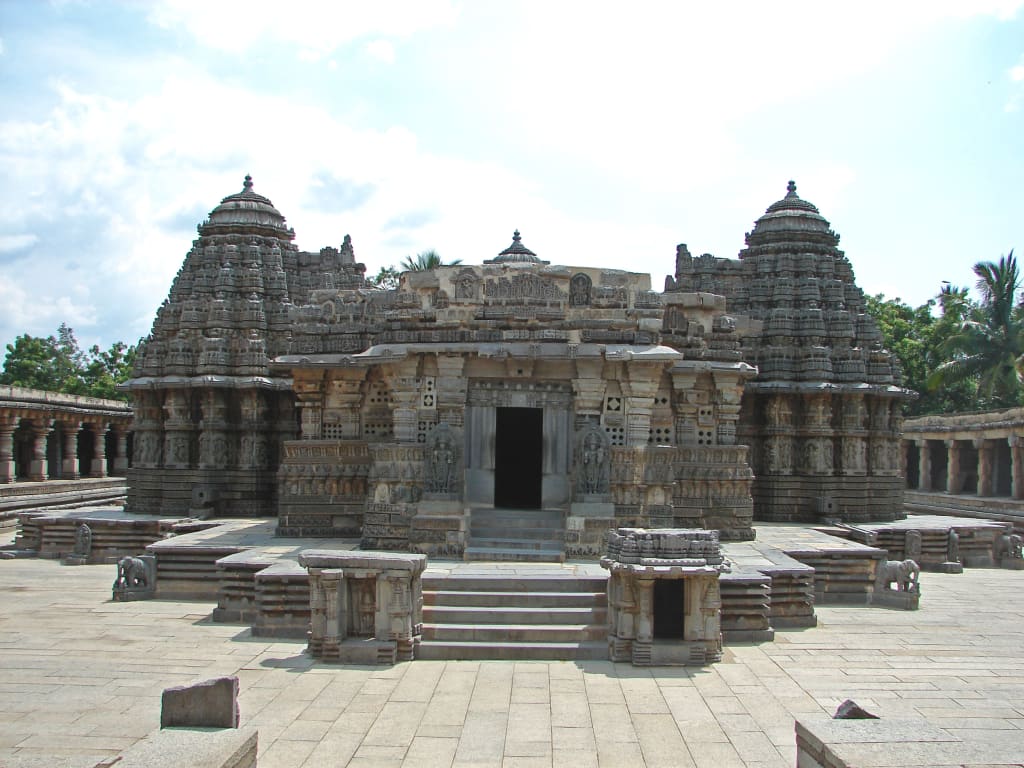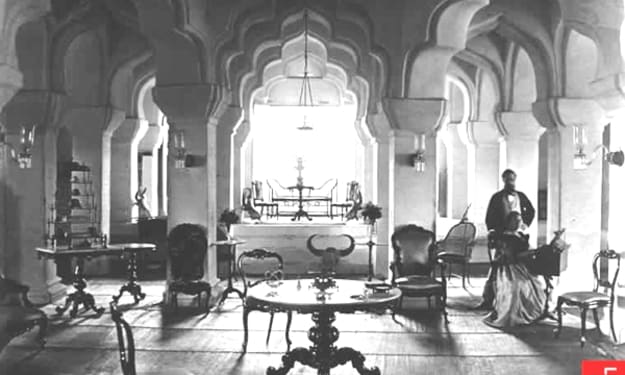"Legacy of the Hoysalas: Architecture, Art, and Ascendancy"
"Exploring the Majestic Realm of the Hoysalas: A Glimpse into South India's Golden Age"

The Hoysala Empire, which thrived from the 10th to the 14th centuries in present-day Karnataka, India, exhibited remarkable power and left a lasting legacy. Here are some key aspects that highlight the empire's strength:
Architectural Marvels: The Hoysalas were renowned for their extraordinary temple architecture, characterized by intricate carvings and elaborate sculptures. They built numerous stunning temples, such as the Chennakesava Temple in Belur, the Hoysaleswara Temple in Halebidu, and the Kesava Temple in Somanathapura. The architectural prowess of the Hoysalas showcased their wealth, patronage of the arts, and ability to mobilize skilled artisans and craftsmen.
Military Success: The Hoysalas were adept military strategists and achieved significant military victories. They successfully repelled invasions by the Cholas, Pandyas, and other neighboring kingdoms, asserting their dominance over the region. The empire's strong military forces and effective defensive measures helped maintain stability and protect their territories.
Trade and Economic Prosperity: The Hoysalas fostered prosperous trade relations with various regions, including the Arabian Peninsula, Persia, and China. They controlled key trade routes, facilitating the exchange of goods and generating substantial revenue through trade taxes. The empire's economic prosperity allowed for the patronage of art, architecture, and literature, contributing to its overall power and influence.
Political Administration: The Hoysala Empire was known for its efficient and well-structured political administration. They implemented a decentralized governance system, allowing local chiefs and administrators to have a degree of autonomy while still remaining loyal to the central authority. This effective administration facilitated better resource management, taxation, and law enforcement.
Cultural Patronage: The Hoysalas were great patrons of art, literature, and culture. They sponsored scholars, poets, and artists, encouraging the development of regional languages like Kannada and supporting the creation of literary and poetic works. The empire's cultural patronage enhanced its prestige, attracting intellectuals and further solidifying its power and influence.
Overall, the Hoysala Empire's power lay in its remarkable architectural achievements, military strength, prosperous trade networks, efficient governance, and cultural patronage. These factors combined to create a powerful and influential dynasty that left an indelible mark on the history and culture of South India.
During the 11th and 12th centuries, the Hoysalas and the Cholas were two prominent kingdoms in South India, both vying for dominance over the region. The Hoysalas, under their powerful rulers like Vishnuvardhana and Veera Ballala II, sought to expand their territories and assert their authority. The Cholas, on the other hand, had an established empire with a long history of conquests.
The Hoysalas and the Cholas clashed multiple times over territorial disputes. The Cholas launched military campaigns into the Hoysala territories, and the Hoysalas, in turn, fought to defend their kingdom. These conflicts resulted in shifting borders and occasional alliances with other neighboring kingdoms, as each dynasty sought to gain an advantage over the other.
While there might have been instances of temporary alliances or truces between the two kingdoms due to geopolitical considerations or political circumstances, it would be inaccurate to state that the Hoysala Empire actively helped the Cholas. In general, the Hoysalas and the Cholas were more often engaged in rivalry and conflict rather than cooperation.
The relationship between the Hoysala Empire and the Pandyas of South India was complex and characterized by both conflict and alliances at different periods in history.
During the 12th and 13th centuries, the Hoysalas and the Pandyas were often engaged in military confrontations over territorial control and regional influence. The Hoysalas, under the leadership of King Vishnuvardhana and his successors, sought to expand their kingdom towards the south. The Pandyas, who had a long-standing dynasty in the Tamil region, resisted Hoysala incursions and fought to protect their territories.
One significant conflict between the two kingdoms occurred during the reign of King Veera Ballala II of the Hoysala Empire. The Pandyas, led by Jatavarman Sundara Pandyan, launched a series of military campaigns against the Hoysalas. These conflicts resulted in territorial gains and losses for both sides.
However, there were also instances of alliances and diplomatic relations between the Hoysalas and the Pandyas. For example, during the later part of the 13th century, King Vira Ballala III of the Hoysala Empire entered into a matrimonial alliance with the Pandyas. He married a Pandyan princess named Sosevuradevi, which helped to establish a temporary period of peace and cooperation between the two dynasties.
Additionally, the Pandyas and the Hoysalas faced a common enemy in the form of the Delhi Sultanate, which was expanding its influence in South India during the 13th and 14th centuries. To counter the Sultanate's incursions, the Hoysalas and the Pandyas, along with other regional kingdoms, formed alliances and coalitions to resist the foreign invasions. These alliances were driven by a shared objective of preserving their respective sovereignties and cultural identities.
Overall, the relationship between the Hoysala Empire and the Pandyas was marked by a mixture of conflicts, alliances, and temporary periods of cooperation, influenced by territorial ambitions, political considerations, and common adversaries. The dynamics between the two dynasties fluctuated over time, reflecting the complex political landscape of medieval South India.
About the Creator
Anitha
I’m a writer, "The Importance of Mindfulness in a Busy World" Currently trying to write a book. Writing about anything and everything
Enjoyed the story? Support the Creator.
Subscribe for free to receive all their stories in your feed. You could also pledge your support or give them a one-off tip, letting them know you appreciate their work.






Comments (1)
Nice 👍